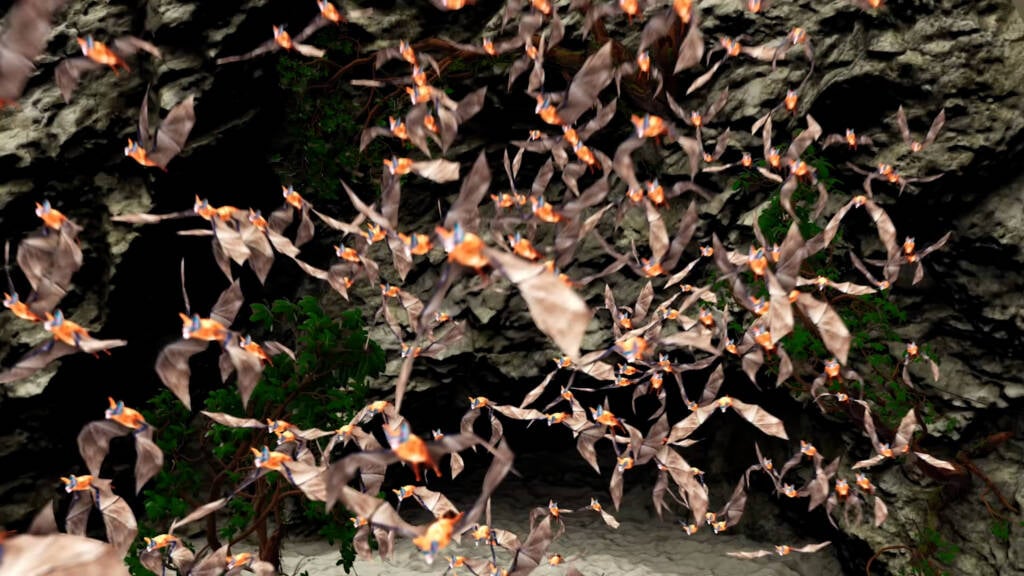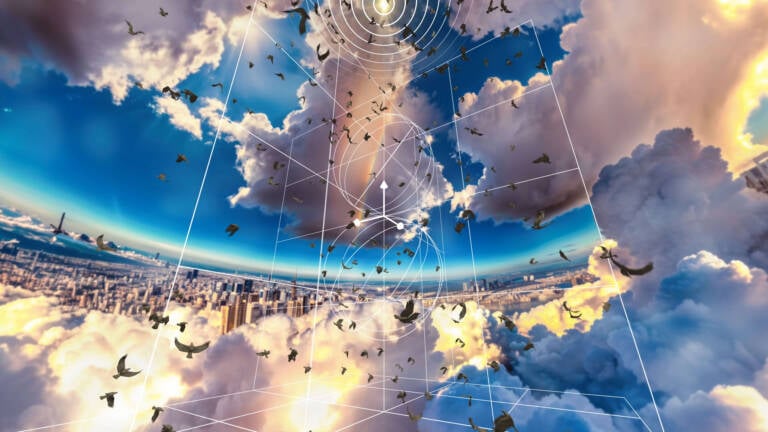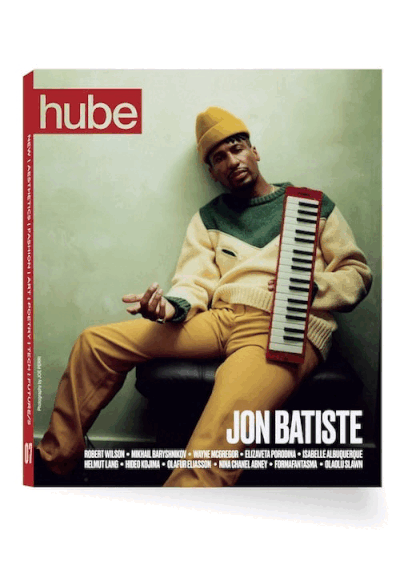The works of Yoshi Sodeoka are a kind of guide on how to create art that not only captures the screen but also exists everywhere and anywhere. As a Japanese digital artist and multimedia experimenter, he treats the glitch as just another shade in his palette. His worlds unfold in colliding spirals and shifting avatars, carrying a sensibility rooted in his beginnings as an oil painter, where time is blurred and duration stretched. Speaking with hube, Sodeoka unravels warped timelines, speculative futures, digital mystique, and the vanishing line between life on- and offline.
hube: Your work often evokes something simultaneously ancient and futuristic, like digital fossils from a parallel timeline. When you lean into the organic, are you conjuring lost histories, speculative futures, or something beyond the linear concept of time?
Yoshi Sodeoka: I like the idea that what seems ancient might be ahead of us, and what feels futuristic might already be buried. The work lives in that blur.
h: You’ve been engaging with digital tools since long before the current wave of generative AI. Do you feel that the rapid accessibility of these tools democratizes creativity or dilutes it?
YS: I don’t really see it as democratization or dilution, more like acceleration. The tools are everywhere now, but what matters is how you tune them, how you shape a language that doesn’t feel generic. My position hasn’t really changed; I just keep following the line I’ve been pulling on for decades.
h: There’s a strong pull toward digital surrealism in today’s visual culture. Why do you think these hyper-synthetic dreamscapes resonate so deeply right now?
YS: I think people are hungry for mystery in a time when almost everything feels mapped and explained. The synthetic dreamscapes work because they suggest something that can’t be fully decoded; an image that resists clarity.
h: Your visuals often feel like visualizations of sound, as if they hum or pulse on their own. How has your relationship with music shaped your sense of rhythm, composition, or texture in digital space?
YS: Music taught me that texture can be as powerful as form. In the visuals, I’m often chasing that same density you find in sound, layers colliding, dissolving, vibrating against each other.




